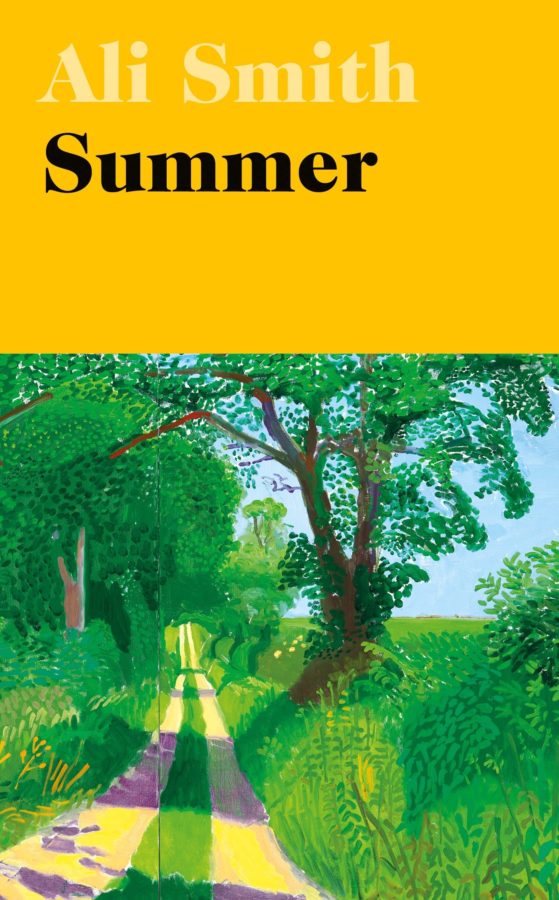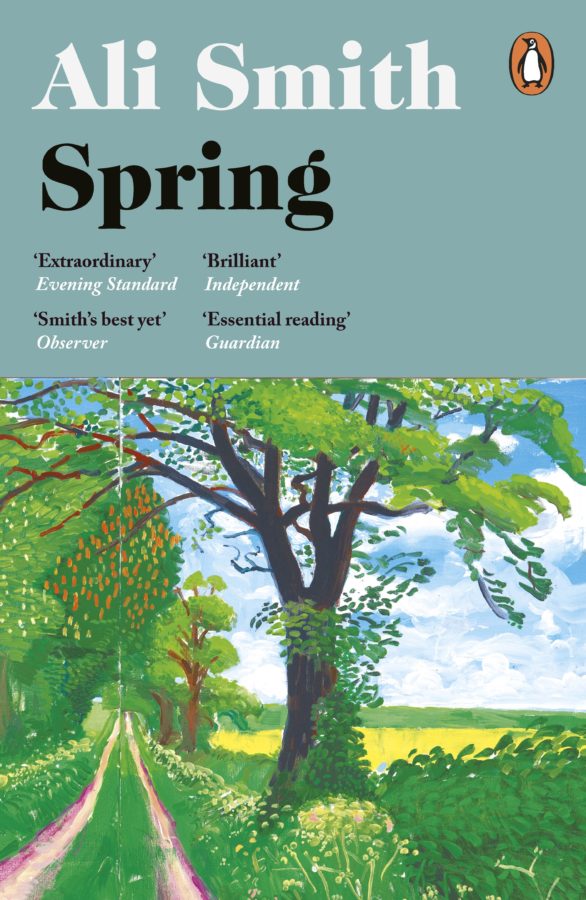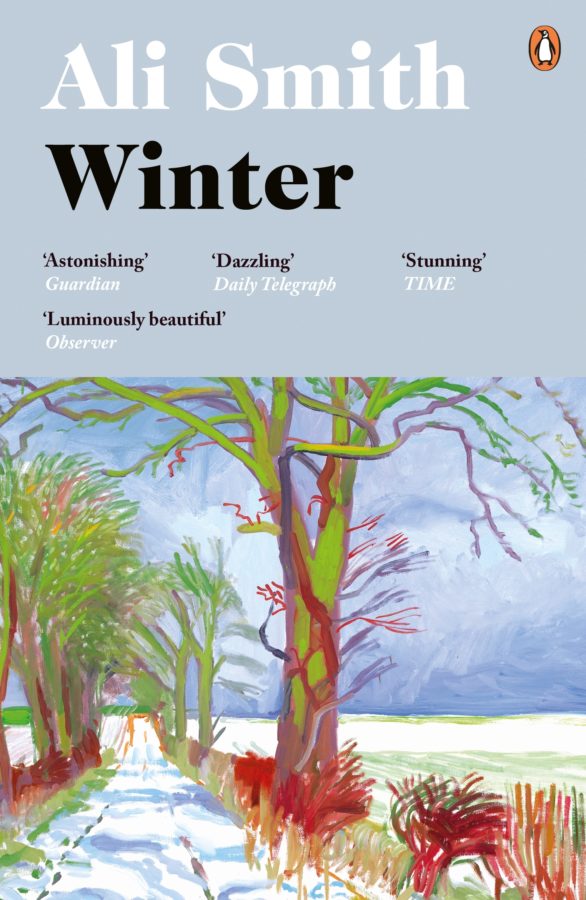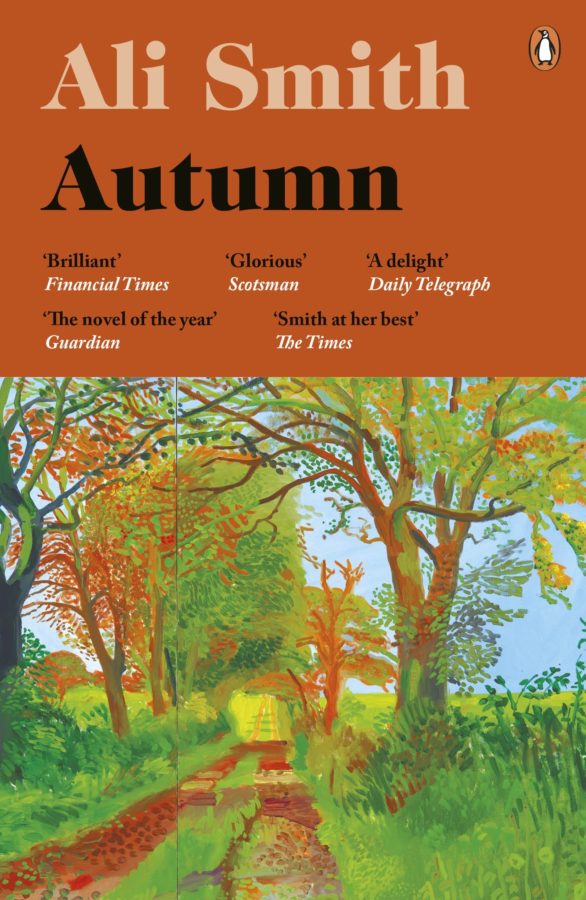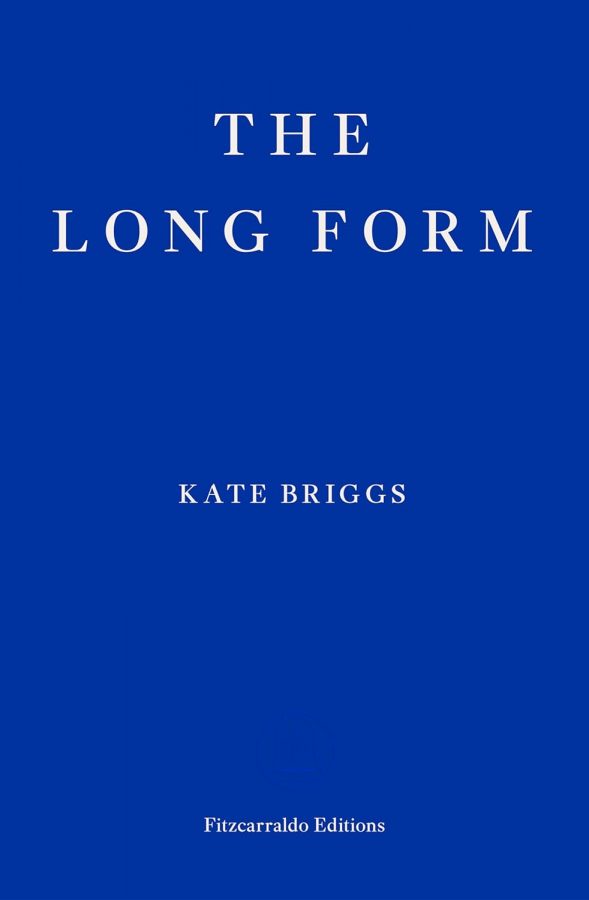Ali Smith’s decision to begin her seasonal quartet in the mellow fruitfulness of Autumn and end in glorious Summer now seems like heroic optimism. The quartet was conceived as an exercise in writing to the moment: a sequence of novels written and published at the rate of one a year, set in part at the time of their composition, responding to events as they unfolded in the wake of the bitterly fought Brexit referendum of 2016. The publishing schedule didn’t quite work out: Spring was late. Yet in the very act of aligning a creative embrace of happenstance with the cycle of the seasons there is an article of faith. The implication is that at some point fortune’s wheel must turn, that a period of darkness must eventually give way to a period of light and flourishing. Winter, a character reflects in Winter, is about ‘remembering how to still yourself and then how to come pliantly back to life’. Summer, we are informed in Summer, comes from ‘the Old English sumor, from the proto-indo-european root sam, meaning both one and together’. When she began writing Autumn, Smith could hardly have foreseen that Summer would arrive in the middle of the deadly pandemic the novel is up-to-date enough to mention, or that the humiliating Brexit fiasco would still be unresolved, though she might have guessed that her society’s misery would be exacerbated by the incompetent leadership of the same mendacious buffoon who played such a prominent role in the dishonest and deeply cynical Leave campaign. That rejuvenating moment of sunshine looks like it could be a while coming.
This recourse to the mythos of the seasons makes Smith’s quartet distinctive – and distinctive as a series of politicised novels, in particular. Its deeper ambitions are signalled in numerous references to Shakespeare’s late romances: Pericles, The Winter’s Tale, Cymbeline and The Tempest. These are fanciful plays, steeped in myth and fairy tale, full of magical transformations, replete with dark themes, but ultimately resistant to the terminal darkness of tragedy. Shakespearean romance, to quote Marjorie Garber, ‘speaks about society by speaking about poetry, art, dream, and transcendence’; the romances ‘enact patterns of desire and loss and fear and passion and hatred and ambition, just like the tragedies, but they do so as if they were happening inside our own imaginations, rather than inside the minds of Shakespeare’s introspective and ruminative heroes’.
The significance of the romances for Smith is this ability to refract political questions through the prisms of art and imagination. They conceptualise art not as something merely imitative or expressive, but as a manifestation of humankind’s innate mythopoeic consciousness. Central to Smith’s response to the darkness of the times is a belief in the priority of art, a belief that we are – fundamentally, constitutively – art-makers, storytellers, fashioners of our own worlds. She has long been fascinated with art’s ability to seize and direct the awareness, impose a sense of form. In Artful (2012) – a series of lectures on aesthetics in the fictionalised form of an address to a dead lover – she makes the point with reference to Wallace Stevens’ poem Anecdote of the Jar, in which the simple act of placing a jar on a hillside becomes an analogue for the artist’s intervention in reality. The deliberateness of the gesture is formally generative in a way that reverses the logic of mimesis. The jar as art-object does not reflect its reality; it defines its own context, transforms the surrounding landscape into its dominion: ‘the made thing, the not-natural thing,’ observes Smith, ‘orders the reality round it’.
The idea recurs in the quartet, which is itself an extended disquisition on the meaning of art, full of musings about the formal and affective properties of painting, sculpture, photography, film and literature. Smith’s characters are led to understand themselves and their world through their encounters with and reflections upon art. As a character in Winter remarks as she admires a strangely compelling sculpture, it ‘makes you walk round it … makes you look through it from different sides, see things from different positions’. A comparable power is granted to the art of narrative, which is understood to have its own generative and transformative potential. ‘Whoever makes up the story makes up the world,’ a wise old man aphorises in Autumn. A minor but important character in Spring – one of several perspicacious mentor-figures to appear in these novels – proposes that there are ‘ways to survive these times … and I think one is the shape the telling takes’. Later in the novel, the same character notes that there is ‘a difference between narrative strategy and reality, but they’re symbiotic’.
In this sense, the quartet is political in its form and not just its content, though there is nothing oblique about Smith’s engagement with recent events. Autumn’s opening line renders Dickens unequivocal: ‘It was the worst of times, it was the worst of times.’ The weary tone contains its tincture of irony. The worst is not, so long as we can say ‘this is worst’. But things are bad all right. An early scene has Elisabeth Demand, a thirty-something casual lecturer in art history, getting the bureaucratic runaround while trying to arrange a passport photo. She keeps being told her head is the wrong size. Beyond the comedy of petty frustration there is a pervasive sense of wrongheadedness: an awareness that a nativist obsession with the ratification of identity and the policing of borders is bending an entire society out of shape, that something profoundly ugly has been unleashed. There is a passing reference to the murder of Labour MP Jo Cox, shot and stabbed to death in the street in broad daylight while out campaigning to Remain – a minor incident, in the broader scheme of things. ‘It’s old news now,’ muses Elisabeth. ‘Once it would have been a year’s worth of news.’ She passes some people shouting abuse at a group of tourists, sensing in the incident ‘a fraction of something volcanic’. When she visits her mother in a village so riven by the Brexit vote that half the residents are not speaking to the other half, her mother gives voice to the feelings of exhaustion and despair that seem to have become ubiquitous in recent years (and not just in Britain):
I’m tired of the news. I’m tired of the way it makes things spectacular that aren’t, and deals so simplistically with what’s truly appalling. I’m tired of the vitriol. I’m tired of the anger. I’m tired of the meanness. I’m tired of the selfishness. I’m tired of how we’re doing nothing to stop it. I’m tired of how we’re encouraging it. I’m tired of the violence there is and I’m tired of the violence that’s on its way, that’s coming, that hasn’t happened yet. I’m tired of liars. I’m tired of sanctified liars. I’m tired of how those liars have let this happen. I’m tired of having to wonder whether they did it out of stupidity or did it on purpose. I’m tired of lying governments. I’m tired of people not caring whether they’re being lied to any more. I’m tired of being made to feel this fearful. I’m tired of animosity. I’m tired of pusillanimosity …
… which is not really a word, as Elisabeth is compelled to point out, though it probably should be.
The incantatory quality is one of the notable characteristics of Smith’s unique and highly propulsive prose style, which has the affect of a kind of ersatz modernism. One imagines it is how Katherine Mansfield might have written if she started drinking Jack Kerouac’s amphetamine-spiked coffee. The only contemporary British writer who might be in some sense comparable is Nicola Barker. Typographic quirks, ludic riffs and jokey authorial asides all contribute to a jumpy informality of tone that gives Smith’s writing its extemporised feel.
The energised prose is well matched to the charged atmosphere of the times. Much of the surface politics of these novels is played out on the rhetorical level of their staged arguments, which are mostly conducted in quickfire dialogue, but make room for the occasional summatory or denunciatory statement. Elisabeth’s mother’s speech can be taken as representative in the limited sense that it is less a penetrating piece of political analysis than a bingo card of blame. It is an admission of impotence and incomprehension that conveys a generalised frustration and perhaps a note of incredulity at the wretched state of the nation. While the quartet as a whole does not lack for the balancing qualities of humour and sympathy, it retains a solid core of moral outrage. Scattered throughout are expressions of anger, exasperation and disgust – sometimes in the context of arguments between characters, sometimes in the voice of the novels themselves – which counter the febrile political context with their own emotional heat. These passages are not necessarily meant to be read in isolation as decisive commentaries, but I think it is fair to say that Smith comes near-enough to editorialising in the scabrous satirical blast at the beginning of Spring, which channels the collective voice of all the cynical manipulators and sowers of discord, and in sarcasm of the opening pages of Summer, where she expresses something akin to contempt for those who would retreat into a pose of indifference, as if all the hatefulness of the past five years were no big deal. ‘Fuck compassion fatigue,’ spits one of her favoured characters. ‘That’s people walking around with dead souls.’
These impassioned outbursts are part of the debate that is threaded through the novels about the uneasy relationship between art and politics, and by extension what it might mean to write a series of politicised novels. ‘Fiction is political,’ Smith has stated:
Fiction can’t not be. But to set out to write anything political means it’ll be political and not itself. Fiction tells you, by the making up of truth, what really is true. That’s all fiction writers can do. If you ask anything of fiction other than fiction, fiction won’t be able to do it. Or it won’t be good enough, it won’t work.
This is an old familiar paradox. Smith, who once wrote a novel called How to be Both (2014), dwells quite happily within that paradox. What it entails in practice is that the dramatic exchanges of political ideas are framed by the dramatic exchanges of aesthetic ideas. This allows the novels to articulate their ambitions, since it is axiomatic that any discussion of art in a novel will have a self-reflexive aspect. It is significant too that the exchanges, though never entirely one-sided, are often unequal. Mentoring relationships are clearly important to Smith because they represent the positive principles of renewal and transformation – to teach something is to give new life to old knowledge; to learn something is to see the world anew and change within yourself – but they also grant the novels a licence to be explicit. At the centre of Autumn is the enduring friendship that develops between Elisabeth and her elderly neighbour Daniel Gluck, who becomes Prospero to her Miranda, initiating her into the magical realms of art and storytelling. In Spring, a filmmaker named Richard Lease looks up to a sharp-tongued screenwriter and ‘glamorous older woman’ named Paddy, who offers him sage advice about his career and schools him in the finer points of narrative craft (she also does him the service of recommending he read Katherine Mansfield).
Smith is always attuned to the interplay of mismatched intelligences, from which she extracts a good deal of wit and energy. Her depictions of extremely clever children and young women are something of a speciality. A rather dull character named Art (short for Arthur) spends a good deal of Winter having his ignorance exposed in conversation, firstly by his switched-on girlfriend Charlotte, then by a charismatic girl named Lux, whom he meets at a bus stop and hires to pretend to be Charlotte in order to deceive his mother – the real Charlotte having stormed out in a fit of irritation at his fecklessness. The second half of Spring comes to focus on the relationship between a detention-centre guard named Brittany, whom everyone calls Brit (there is quite a bit of allegorical and/or ironic naming going on in these novels), and a precocious twelve-year-old girl she meets at a train station, who has an uncanny ability to slip past security checkpoints without being detected (there is a bit of allegorical conceptualising and/or plotting too). They present an inverted view of the mentoring relationship, the girl’s combination of innocence and acuity challenging Brit’s complacent certainties.
Evident in all this is a tendency for Smith’s characters, vibrantly individuated though they are, to gravitate towards representative or archetypal roles. They express different political and philosophical viewpoints and thus come to embody them. And one of the most important demarcations in the quartet is between characters who understand and embrace the transformative double-vision of the artist – defined in Summer by yet another mentor-figure as the ability ‘to see things as they are and as they aren’t’ – and those who are inclined to resist the duality. On this point, the novels are certainly partisan: the former are always wiser than the latter and the division of aesthetic understanding tends to align with the divide between progressive and conservative temperaments.
There are a number of examples of this, but the most overt are the sisters Iris and Sophia in Winter, one of several sets of rival siblings in the quartet. The freewheeling Iris is a radical, who deplores the injustice of the world and devotes her life to political activism. The cautious and responsible Sophia – industrious ant to Iris’ heedless grasshopper – rationalises her quietism with the claim that the world was ever thus. She scoffs at her older sister’s impracticality and idealism, accusing her of living inside a ‘private myth’. Their sniping culminates in an argument about the difference between art and politics, which echoes an argument earlier in the novel between Art (who is Sophia’s son) and Charlotte. ‘Beauty is the true way to change things for the better,’ claims Sophia, with a view to repudiating her sister’s militancy. ‘Beauty is truth, truth beauty.’ A little later in the novel, goaded by Iris, Sophia doubles down, citing Keats again to insist that politics and art are ‘polar opposites. As a very fine poet once said, we hate poetry that has a palpable design on us.’ Iris sends her rejoinder via text message to Art (from a phone without auto-correct, it would seem):
… Keats was an anomaly, no Eton or Harrow or Oxbridge for him … every bloody word Keats wrote and managed to publish was bloody well politicized all right & th diff dear Neph is more betwn artist and politician – endlss enemies coz they both knw THE HUMAN will alwys srface in art no mtter its politics, & THE HUMAN wll hv t be absent or repressed in mst politics no mtter its art …
In recognising the antagonism between the artist and the politician as the crux of the issue, rather than the abstract distinction between art and politics, Iris identifies the deeper question that concerns Smith, and the deeper meaning of Keats’ objectively implausible assertion about beauty – the truth entailing, pretty obviously, considerable quantities of ugliness. Sophia’s view is a standard bourgeois domestication of Keats. It is a condescending interpretation that would reduce him to a caricature of the passive, contemplative, hypersensitive romantic poet. This interpretation is not so much shallow as just plain wrong. Keats’ line about hating poetry that has a design on us was, in fact, lifted directly from the radical essayist William Hazlitt, whom he greatly admired, and whose ideas about the imagination as a dynamic force of apperception decisively influenced his aesthetic philosophy. The importance of Keats as a recurring cultural reference point in Smith’s quartet is akin to that of Shakespeare’s romances. His poetry seeks to grasp life in all its fullness, in all its darkness and light; it strives to absorb and transform a reality that often cruel and painful into the higher artistic truth he calls beauty. There is nothing passive about it.
The idea that haunts these novels is not the crude notion that art and politics are ‘polar opposites’, or the equally crude notion that ‘all art is political’ in any narrow sense, but the more unsettling proposition that art and politics are obverse principles – that politics is art’s diabolical twin. Fiction is a lie that seeks to tell the truth; the political lie wants to conceal the truth. The aims and the morality of the respective lies are opposed, but the seductive means are the same. Both appeal to the imagination and the emotions. Both speak to our sense of identity and our mythopoeic consciousness. Prospero, recall, is both artist and politician; he uses his magic to manipulate people.
It is in this context that the considerable formal ambitions of Smith’s quartet become significant. Its narrative dislocations, its dream sequences and surreal touches, its arsenal of formal tricks, its ekphrastic passages, its debates about the definition of art and the morality of the imagination – these are all deployed with a view to creating a liminal imaginative space. Smith eventually finds an image to encapsulate her ambition in a scene from an obscure postwar film, described at the very beginning of Summer, in which a man carrying two suitcases dances around a narrow ledge at the top of a high building. The precariousness of his situation, the exuberance of his dance, and the seemingly impossible grace that prevents him from falling combine to make the scene transfixing. In an interview with the Paris Review in 2017, Smith stated:
… extraordinary things happen on the edges – the changes happen, the magic for want of a better word, happens at the edge of things. Everything is possible at the edge. It’s where the opposites meet, the different states and elements come together. … I don’t like borders. I like edges, but not borders.
In that distinction between edges and borders Smith finds a wedge to maintain the necessary distinction between art and politics, without actually divorcing them or lapsing into mere didacticism. The friction is created by her temporal manipulations (for novels notionally about the present they spend a lot time jumping back and forth in time, creating meaning from juxtapositions and parallels in a way that suggests reality can be reordered and understood in a multitude of ways) and her ability to move between fictional modes. The overtly topical aspects of the novels – the depiction of the systematic dehumanisation of the prisoners inside Brit’s detention centre in Spring, for example – blur into a sense of unreality, which manifests itself at those points where the strict delineations and exclusions demanded by politics reveal their artificiality and thus their instability. To the extent the quartet can be read as a kind of satire, it takes aim at all those arbitrary rules about identity and belonging that have as their underlying aim the suppression or denial of humanity. And the proof that these strict delineations are false is to be found in the realities of art, which does not and has never respected borders.
Smith’s sentiments about borders are recast in Spring by the preternaturally perceptive, security-guard-confounding, twelve-year-old girl:
What if, the girl says. Instead of saying, this border divides these places. We said, this border unites these places. This border holds together these two really interesting different places. What if we declared border crossings places where, listen, when you crossed them, you yourself became doubly possible.
This is clearly ‘naive’, as Brit immediately points out. Yet the girl embodies her own idea. Her rootlessness and transience associates her in the quartet with two other important marginal figures, who cross borders and whose sense of belonging is uncertain: the refugee and the tramp. She is described as being ‘like someone or something out of a legend or story’. She is a character from a fairy tale and, as Brit senses, it ‘feels a little dangerous, to be so close to a fairy tale’. The essence of that danger lies in the idea that the naive view is sometimes the true and essential view, and the recognition that the unreality of fairy tales is the source of their subversiveness. In the latter stages of Spring, a member of an underground group dedicated to helping refugees escape detention declares:
We are a fairy story. We’re a folk tale. I don’t mean to sound in the least fey. Those stories are deeply serious, all about transformation. How we’re changed by things. Or made to change. Or have to learn to change.
Towards the end of Summer, it is revealed that the scene of the man dancing on a rooftop is the work of an Italian writer and filmmaker named Lorenza Mazzetti, who is introduced as a belated inclusion to the quartet’s roster of historical figures who represent its ideals of creative awakening and affirmation and possibility – Shakespeare, Keats, Dickens, Mansfield, Rilke, Einstein, Pauline Boty, Charlie Chaplin, Tacita Dean. Smith digresses into a biographical sketch, in the course of which she introduces an unsourced quote that does not refer specifically to Mazzetti, but is relevant nonetheless:
Creativity is cultural not because it is derivative of it, but because it aims to heal culture. Art saturated with the unconscious acts like a compensatory dream in the individual: it tries to rebalance and address deep-rooted problems.
Aiming to heal culture is not the same as actually doing so, of course. But intentions matter. The conceptualisation of art as a form of wish-fulfilment is itself a way of looking beyond and thus resisting the present, or at very least placing oneself at a remove from its more egregious corruptions. In this sense, the choice these novels ultimately compel is not between art and politics, or even the mythical and the realistic. They pose a much trickier political question, which is articulated in Winter by a creepy and insinuating minor character: ‘Into whose myth do we choose to buy?’
In Winter, set in the immediate aftermath of the Brexit vote, there is a discussion about Cymbeline, in which one character summarises Shakespeare’s most notoriously convoluted plot in a way that makes its contemporary relevance impossible to miss. It is a play, she states, ‘about a kingdom subsumed in chaos, lies, powermongering, division and a great deal of poisoning and self-poisoning’. Yet as another character points out, its charm, its imaginative achievement, is that it vanquishes the chaos. It is a play in which ‘everybody is pretending to be someone or something else … And you can’t see for the life of you how any of it will resolve in the end, because it’s such a tangled-up messed-up farce of mess’; but somehow it does resolve into a ‘graceful thing … where the balance comes back and all the lies are revealed and all the losses are compensated’.
Smith wraps this brief exchange in layers of contextual irony. The character who makes the plot of Cymbeline sound like recent history is the same Sophia who insists that art has nothing to do with politics. The character who admires the play’s grace is the hyper-intelligent Lux, who spends a good deal of the novel pretending to be someone else. She is also an immigrant from eastern Europe, a literal Bohemian, who claims to have come to England because of her admiration for Shakespeare, but who is now faced with the prospect of deportation – all of which adds a certain piquancy to the fact that she displays a greater appreciation for England’s national poet than the English people she is talking to. The ironically named Art, a terrible artist with a less than masterful grasp of his own language (Smith has included a sample of his prose in the novel, treating us to a wicked parody of schmaltzy nature writing), is not even sure what they are talking about. ‘Ah,’ he bluffs, ‘Yes. Of course. Cimmeleen.’
There is no uncomplicated sense in these novels that art and imagination incline naturally towards justice and reconciliation. The cyclical nature of the seasons precludes any possibility of utopianism. Darkness and light will always be entwined. But in its insistence that change is the only constant, that borders are invariably porous, that we live within narrative structures that are infinitely flexible yet ultimately mythical in form, and that the stories we inhabit are always larger than ourselves, Smith’s seasonal quartet seeks to remind us of the political truth that renewal, restitution and harmony are at least thinkable, and thus never entirely beyond the realms of possibility. In the end, that’s all fiction writers can do.
Works Cited
Adam Begley, ‘Ali Smith, The Art of Fiction No.236’ The Paris Review, issue 221 (Summer 2017).
Marjorie Garber, Shakespeare After All (New York: Anchor, 2005).
Ali Smith, Artful (London: Penguin, 2013).
